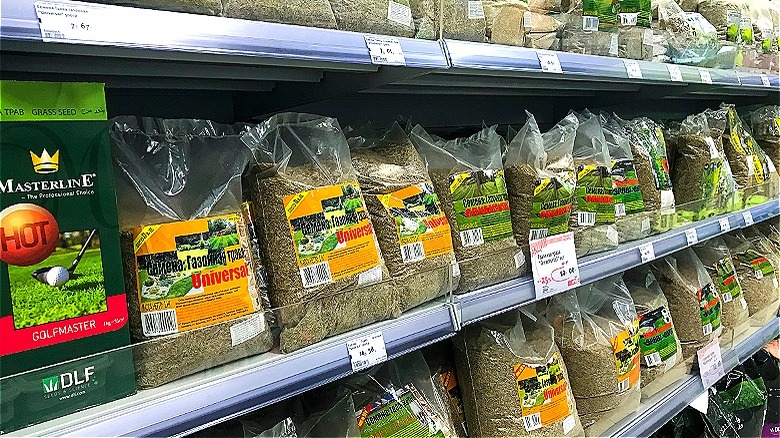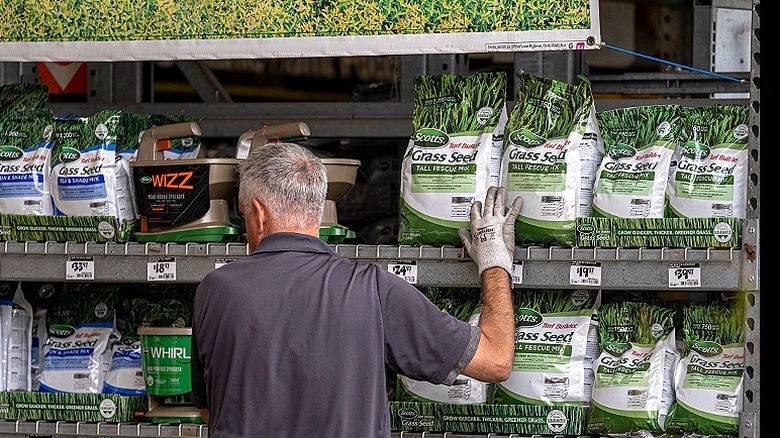You may read the label when you buy a new food or even when you’re after super-soft clothing to wear, but what about when you buy grass seed? Before applying any grass seed to your lawn, you have to know what’s actually in the seed mixture you’ve picked up from the home improvement store. To do that, read the label, which contains information about the specific species present, the germination rate, and the amount of pure seed included.
Reading a grass seed label can be a bit tricky, and they’re not all the same. However, there are a few things to specifically look for when making a buying decision. Besides the seed ratio and analysis, also look at some of the details like the test date and the sell-by date. You’ll also find information about the weed seed concentration.
There are several reasons why this is important, with the most obvious being it helps you determine what to expect before making a purchase. Purchasing high-quality grass helps ensure germination, a thick coverage for your lawn, and even just how much seed you need to purchase for your area. It’s so important to know what you’re buying that the Federal Seed Act, overseen by the U.S. Department of Agriculture’s Agricultural Marketing Service, puts in place laws governing seed quality and disclosure information. Fall is the ideal time to plant grass seed, but know what you’re buying before you do.
What to look for on a seed tag

The grass seed label, or tag, provides a breakdown of a great deal of information on what’s in the bag, including the seed’s product name, net weight of the container, and lot number. The first thing to carefully consider is the Pure Seed rating, which is the percentage of grass seed present of each of the various species included in the mixture. Nearly all grass seed is a blend that contains more than one variety, and this figure represents the purity or the percentage of each type present. This information is then broken down into the variety and kind (such as a name-brand grass and then the kind, like “tall fescue” or “Kentucky bluegrass”).
Next, look at the line-by-line breakdown of each of those seed varieties to see the Germination Rate, which is the rate at which the seed is expected to grow based on the variety. You’ll notice that many times, this is not anywhere near 100%, and that’s normal. Typically, those with an 80% or higher germination rate are standard or better products.
There’s more in the seed mixture than just seeds, too, including Inert Matter, which could be any type of non-seed matter included, like fertilizers to stimulate growth and mulch to bulk up the seed. Some seed blends also will note “Other Crop Seed,” which refers to any additional type of seed beyond grass seed included. This is a figure that should be low, typically under 0.10%.
What to know about weed content in grass seed

It’s quite interesting that your grass seed variety will contain some level of weed seed. In inferior grass seed products, the weed seed percentage is high, which is anything approaching 1% (look for those that are closer to 99.99% weed seed-free). These seeds make it into the bag simply because they’re likely growing where the seeds are produced. It’s normal for a very small amount of weed seed to be present, but look at what type of seed it is.
The Noxious Weeds percentage is the most important to look at. These weeds are very difficult to get rid of, and you don’t want to install a brand-new lawn with a high percentage of such weeds. The best quality products will have 0% noxious weeds or will state that they’re a “no noxious weed” blend. The lower the percentage of weed seed on the tag, the higher the quality and the higher the price of the grass seed.
Also, notice the Guaranteed Analysis data on the seed tag, as that provides valuable insight about the nutrients included with the seed. If the product you’re buying includes any type of fertilizer with it, this figure will break down the quality of those nutrients, typically nitrogen, phosphorus, and potassium present. Finally, always check the Sell By Date (which is set by the state’s laws). You don’t want to purchase old grass seeds that will not germinate when you need them to.




